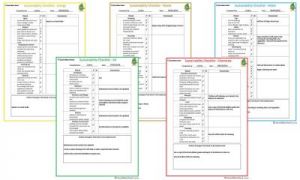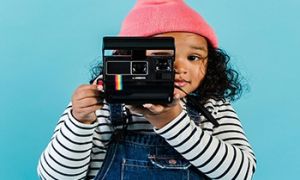To support children achieve learning outcomes from the MTOP Framework Version 2.0, the following list gives educators examples of how to promote children's learning in each individual learning outcome. These can be used when assessing children's learning, critically reflecting on the experiences planned, strategies to implement for each learning outcome and more. It also encourages and promotes each individual outcome throughout the early childhood setting.
Outcome 1: Children And Young People Have A Strong Sense Of Identity
Children and young people feel safe, secure and supported
Educators promote this learning for all children and young people when they, for example:
- spend time interacting and conversing with children and young people, listening and responding sensitively as they express their ideas and needs support children and young people’s attachment through consistent and warm nurturing relationships
- familiarise and involve themselves with the setting’s Reconciliation Action Plan
- support children and young people in times of change and bridge the gap between the familiar and the unfamiliar
- recognise that feelings of distress, fear or discomfort may take some time to resolve
- acknowledge each child’s uniqueness in positive ways
- refer to children and young people with the pronouns they would like to be identified by
- provide books and other resources that depict diverse gender roles and identities respectfully
- support diverse genders and cultures to share spaces and resources safely and equitably
- support the development of children and young people’s friendships
- acknowledge the importance of opportunities for children and young people to relax through play and leisure
- trust and support children and young people to be successful and capable
- establish mutual trust and respect between the families that attend the setting
- provide a culturally safe place where Aboriginal and Torres Strait Islander children and young people and children and young people from culturally diverse backgrounds can share their
- stories about history and culture
- provide opportunities for Aboriginal and Torres Strait Islander educators to provide feedback and reflections on best practice
- ensure the Aboriginal and Torres Strait Islander flags are displayed at the setting
- acknowledge each child or young person’s uniqueness in positive ways
- provide a culturally safe environment.
Children and young people develop their autonomy, interdependence, resilience and sense of agency
Educators promote this learning for all children and young people when they, for example:
- encourage children and young people to make choices and decisions
- encourage children and young people to collaborate with peers and educators to plan programs
- provide children and young people with strategies to make informed choices about their behaviours
- promote children and young people’s sense of belonging, connectedness and wellbeing
- maintain high expectations of each child’s capabilities
- mediate and assist children and young people to negotiate their rights in relation to the rights of others
- display encouragement and enthusiasm for children and young people’s attempts
- motivate and encourage children and young people to succeed when they are faced with challenges
- provide time and environment for children and young people to engage in both individual and collaborative pursuits
- trust and support older children and young people to be autonomous and capable
- apply a strength-based approach to practice to encourage confident learners
- Share stories with families including Aboriginal and Torres Strait Islander families about their young person’s successes
Children and young people develop knowledgeable, confident self-identities and a positive sense of self-worth
Educators promote this learning for all children and young people when they, for example:
- listen to and learn about children and young people’s understandings of themselves, who they are and their connectedness to others – a shared identity as Australians
- ensure all children and young people experience pride and confidence in their achievements
- share children and young people’s successes with families
- show respect for and a deep understanding of diversity, acknowledging and celebrating the varying approaches of children and young people, families, communities and cultures
- acknowledge and understand that children and young people construct meaning in many ways
- maintain and build on the knowledge, languages and understandings that children and young people bring
- acknowledge each child and young person’s family, culture, language and uniqueness in positive ways
- talk with children and young people in respectful ways about similarities and differences in people, identities and culture
- provide rich and diverse resources that reflect children's and young people’s social worlds
- actively support access to science and technology experiences
- demonstrate inclusive communication practices, such as pronouncing each person’s name correctly and using preferred names, e.g. nicknames including gender pronouns
- provide older children and young people with experiences that are challenging, engaging and reflect their diverse interests
- provide opportunities for educators to develop knowledge and understanding of Aboriginal and Torres Strait Islander relationships and connections to Country and family including kinships systems
- recognise disability as a form of diversity and demonstrate inclusive approaches in their interactions with children and young people
- develop understanding and knowledge of approaches to support gifted and talented children and young people
- create inclusive indoor and outdoor environments with awareness of barriers to participation.
Children and young people learn to interact in relation to others with care, empathy and respect
Educators promote this learning for all children and young people when they, for example:
- organise environments and spaces in ways that promote small and large group interactions and play and leisure
- model care, empathy and respect for children and young people, educators and families
- initiate one-to-one interactions with children and young people
- model explicit communication strategies to support children and young people to sustain productive relationships with other children and young people in play and social experiences
- acknowledge children and young people’s complex relationships and sensitively intervene in ways that promote consideration of alternative perspectives and social inclusion
- model care, empathy and respect for children and young people of diverse ages and capabilities
- provide a culturally safe and secure environment for all
- provide opportunities for children and young people and other educators to develop knowledge and understanding of Aboriginal and Torres Strait Islander history and culture
- use a range of teaching strategies and multicultural resources to acknowledge and show respect for differences
- provide opportunities for children and young people and other educators to develop knowledge and understanding of familial history and culture.
Outcome 2: Children And Young People Are Connected With And Contribute To Their World
Children and young people develop a sense of belonging to groups and communities and an understanding of their reciprocal rights and responsibilities necessary as active and informed citizens
Educators promote this learning for all children and young people when they, for example:
- promote a sense of community within the school-age care setting
- build connections between the school-age care setting, schools and the local community
- provide opportunities for children and young people to investigate ideas, complex concepts and ethical issues that are relevant to their lives and their local communities
- assist children and young people in their explorations of natural and constructed environments
- investigate the interdependence between people, animals, plants, lands and waters
- model language and actions that children and young people can use to express ideas, negotiate roles and collaborate to achieve goals
- scaffold children and young people’s opportunities to participate and contribute to group activities
- plan opportunities for children and young people to participate in significant ways in group discussions, shared decision-making about rules and expectations and activities
- create opportunities for collaboration with adults of all ages
- support children and young people to form their own groups
- create a range of ways for children and young people to participate in programming decisions
- create opportunities for open and authentic partnerships with families, communities and organisations including Aboriginal and Torres Strait Islander people and those from culturally diverse backgrounds
- inform children and young people about the outcomes of decision-making processes they have been involved in
- provide opportunities for diverse groups of children and young people to contribute to program planning
- ensure partnerships with Aboriginal and Torres Strait Islander communities and organisations are genuine and sustainable
- build children and young people’s awareness of the 7Rs of sustainability: reduce, reuse, recycle, respect, repair, reflect and refuse as part of economic sustainability
- create opportunities to contribute to community well-being, e.g. food banks.
Children and young people respond to diversity with respect
Educators promote this learning for all children and young people when they, for example:
- plan experiences and provide resources that broaden children and young people’s perspectives and encourage appreciation of diversity
- engage in interactions with children and young people that promote respect for diversity and value distinctiveness
- expose children and young people to different languages and dialects and encourage appreciation of linguistic diversity including cultures
- encourage children and young people to listen to others and to respect diverse identities and perspectives
- demonstrate positive responses to diversity in their own behaviour
- explore the culture, language, heritage, backgrounds and traditions of children and young people within the context of their family and community, e.g. Diwali, Easter, Chuseok, Harmony Day
- provide resources with diverse representations of culture, heritage, tradition, capabilities and gender
- practice Aboriginal and Torres Strait Islander ways of learning including storytelling, yarning and deep listening with children and young people, their families and communities
- ensure that Aboriginal and Torres Strait Islander resources are genuine and appropriate
- provide opportunities for Aboriginal and Torres Strait Islander children and young people to connect with their own community events and activities, e.g. NAIDOC, National Aboriginal and Torres Strait Islander Children and Young People’s Day, Sorry Business, Reconciliation Week
- use creative forms of expression to explore diversity and emotions
- recognise opportunities to use digital technologies to find answers to questions and document discoveries.
Children and young people become aware of fairness
Educators promote this learning for all children and young people when they, for example:
- notice and listen carefully to children and young people’s concerns and explore diverse perspectives on issues of inclusion and exclusion and fair and unfair behaviour
- analyse and discuss with children and young people the ways in which stereotypes are portrayed
- draw children and young people’s attention to issues of fairness relevant to them in the school-age care setting and community
- provide all children and young people with opportunities to be seen as capable
- build cultural partnerships in the local environment and community
- seek guidance from Aboriginal and Torres Strait Islander Elders and community members about local processes and protocols, history and culture
- provide equitable opportunities for children and young people including, Aboriginal and Torres Strait Islander children and young people who have diverse capabilities, to contribute positively to their world
- provide materials, texts and resources that provide opportunities to analyse and challenge stereotypes associated with age, gender, ability, race and family and community background
- provide clear, accessible information for families and communities about the service’s policies including child safety and wellbeing, Code of Conduct, record-keeping practices, and complaints and investigation processes.
Children and young people become socially responsible and show respect for the environment
Educators promote this learning for all children and young people when they, for example:
- embed social, economic and environmental sustainability in daily routines and practices, e.g. inclusion, sharing of resources and reducing waste
- discuss the ways the life and health of living things are interconnected
- collaborate to develop daily routines and practices that embrace sustainability
- work together with children and young people to show respect, care and appreciation for the natural environment
- provide children and young people with access to a range of natural materials in their environment
- enable children and young people to care for and learn from the land
- discuss the nature of children and young people’s connectedness to the land and demonstrate respect for community protocols
- visibly and verbally acknowledge the connection of language and culture to Country and Traditional Owners
- provide experiences for children and young people to care for the Country and connect with, animals, plants, lands and waterways in the local community
- provide opportunities for children and young people to learn about the interconnected dimensions of sustainability, e.g. recycling bottles and donating funds to local charities and community groups.
Outcome 3: Children And Young People Have A Strong Sense Of Wellbeing
Children and young people become strong in their social, emotional and mental wellbeing
Educators promote this learning for all children and young people when they, for example:
- show care, understanding and respect for all children and young people
- listen and respond empathically when children and young people communicate their distress, fears or frustrations
- collaborate with children and young people to plan and document their achievements and share their successes with their families
- challenge and support children and young people to engage and persevere
- build upon and extend children's and young people’s ideas
- maintain high expectations of each child’s capabilities
- affirm children and young people’s decision-making and efforts
- welcome children and young people and families, sharing aspects of their culture and spiritual lives
- discuss emotions, responses to events, emotional regulation and self-control
- collaborate with children and young people to negotiate their rights in relation to the rights of others
- provide time and space for children and young people to challenge and practice physical prowess
- provide children and young people with a range of challenging and motivating play and leisure experiences
- adjust play and leisure offerings to reflect children and young people’s interests and curiosities as they respond to changes in time, weather and other contextual factors
- support families’ diverse parenting approaches
- use strategies that can help to bring balance and safety to the experience of children who have been impacted by trauma or disrupted attachment, and enable them to move from survival to learning
- set high expectations for Aboriginal and Torres Strait Islander children and young people and challenge them to do their best work
- create opportunities to have more Aboriginal and Torres Strait Islander educators visible in the setting
- provide culturally safe spaces that are welcoming for Aboriginal and Torres Strait Islander children and young people and their families
- use trauma-aware approaches
- investigate how physical movement, exercise and healthy lifestyles assist children and young people’s mental wellbeing
- discuss unsafe situations that would need to be reported to educators and other adults, including
- signs of children and young people at risk
- promote body safety awareness among children and young people
- use appropriate language and strategies to empower children with a basic understanding of the stress response and how they can learn to calm themselves when they notice they are becoming dysregulated.
Children and young people become strong in their physical learning and wellbeing
Educators promote this learning for all children and young people when they, for example:
- create physical environments that test and challenge but are inclusive of children and young people’s physical capabilities
- assist children and young people with opportunities to be physical and use both gross and fine motor muscles
- develop shared notions of ‘risky’ play with children and young people and other educators
- use musical instruments, bean bags, balls, bats, and hoops to develop hand/eye coordination
- provide loose parts of various sizes for individual and collaborative play
- teach children protective behaviours such as telling others to stop doing something that makes them feel unhappy or unsafe
- encourage children and young people to make responsible choices and protect themselves from harm
- design indoor and outdoor spaces where children can retreat for calming or peaceful self-soothing (passive leisure)
- use the dramatic arts for supporting children and young people’s exploration of feelings and opinions
- draw on diverse families and community experiences and expertise to include familiar games and physical activities in play
- draw on diverse families and community experiences and expertise to include various forms of dance, e.g. Khon, Bharatanatyam, Bollywood, Shaku, Hip-Hop, and Irish dance.
Children and young people are aware of and develop strategies to support their own mental and physical health and personal safety
Educators promote this learning for all children and young people when they, for example:
- collaborate to plan energetic physical activities, including dance, drama, movement, sports and games
- draw on family and community experiences and expertise to include familiar games and physical activities
- provide a wide range of resources to develop and consolidate children and young people’s fine and gross motor skills
- encourage healthy eating and an active lifestyle amongst children and young people
- engage children and young people in experiences, conversations and routines that promote safety, healthy lifestyles and nutrition
- provide a range of active and relaxing experiences throughout the day
- adjust transition and routines to take into account children and young people’s capabilities, interests and curiosities
- learn about e-safety for children and young people and embed and model safe and healthy digital practices
- discuss aspects of posture and other health related age-appropriate digital practices with children and young people
- promote all children and young people’s rights for challenging and energetic play to all stakeholders
- develop their own awareness of Indigenous issues around the world
- create culturally appropriate learning experiences for all children and young people where their culture is reflected in the setting
- provide spaces and strategies such as relaxation techniques and self-calming for children and young people to manage strong emotions
- communicate to children and young people that it is ok to say no to touch
- listen carefully and take seriously when children and young people talk about things that bother them
- support children to understand how the brain works
- support children who are feeling anxious to approach indoor and outdoor experiences and routines
- develop their understanding and knowledge of personal safety including appropriate strategies to support children, young people and families’ awareness of boundaries
- identify the role of risk factors and protective factors on children and young people’s development.
Outcome 4: Children And Young People Are Confident And Involved Learners
Children and young people develop a growth mindset and learning dispositions such as curiosity, cooperation, confidence, creativity, commitment, enthusiasm, persistence, imagination and reflexivity
Educators promote this learning for all children and young people when they, for example:
- discuss how the brain develops and is linked to self-regulation
- recognise and value children and young people’s involvement in a variety of play and leisure experiences
- provide environments that are flexible and open-ended
- respond to children and young people’s dispositions by commenting on them and providing encouragement and additional ideas
- encourage children and young people to engage in both individual and collaborative explorative and reflective processes
- listen carefully to children and young people’s ideas and discuss with them how these ideas might be developed
- model inquiry processes, including observation, curiosity and imagination, try new ideas and take on challenges
- explore the diversity of cultures and social identities
- critically reflect on personal responses to all kinds of diversity
- assist children and young people to explore Aboriginal and Torres Strait Islander ways of knowing, being and doing, e.g. explore the 8 Aboriginal Ways of Learning
- create a responsive environment to support children and young people’s sustained investigations
- include a growth mindset model in their everyday activities
- develop their skills in talking to children about how their brains work and how it grows as they learn.
Children and young people develop a range of learning and thinking skills and processes such as problem-solving, inquiry, experimentation, hypothesising, researching and investigating
Educators promote this learning for all children and young people when they, for example:
- plan environments with appropriate levels of challenge for all ages, interests and capabilities, where children and young people are encouraged to explore, experiment and take appropriate risks
- provide experiences that encourage children and young people to investigate ideas, solve problems and use complex concepts and thinking, reasoning and hypothesising
- encourage children and young people to communicate and make visible their own ideas and theories
- collaborate with children and young people and model reasoning, predicting and reflecting processes and language
- provide opportunities for children and young people of different ages, interests and capabilities to initiate and lead activities and experiences
- provide opportunities for Aboriginal and Torres Strait Islander educators to provide feedback and reflect on everyday practices within their setting
- ensure documentation of learning is visible to encourage the revisiting of ideas and concepts
- support children and young people’s extended investigations with flexible schedules to allow for multiple solutions and ways of thinking to be explored
- use digital technologies and media as a means of promoting children's and young people’s
well-being, learning and development - demonstrate how to use the internet and search engines safely
- use cooking experiences to support mathematical and scientific skills such as observation, reasoning, hypothesising and measurement
- use sand and water play to support mathematical and scientific skills such as observation, reasoning, hypothesising and measurement.
Children and young people transfer and adapt what they have learned from one context to another
Educators promote this learning for all children and young people when they, for example:
- support children and young people to apply their learning in new ways and talk about this with them in ways that grow their understanding
- support children and young people to construct multiple solutions to problems and use diverse ways of thinking
- plan for time and space where children and young people discuss and reflect to see similarities and connections between existing and new ideas
- share and transfer knowledge about children and young people’s understandings from one setting to another, by exchanging information with families and with professionals in other settings
- understand that competence is not tied to any particular language, dialect or culture
- create opportunities for all children and young people, including Aboriginal and Torres Strait Islander children and young people and those from culturally diverse backgrounds, to explore and celebrate diversity and culture at school and at home
- provide opportunities for all educators to participate in acknowledging the Country and how this can be used in different settings
- scaffold children and young people’s understanding of how skills and ideas can be transferred to other activities through conversation and questions.
Children and young people resource their own learning through connecting with people, places, technologies and natural and processed materials
Educators promote this learning for all children and young people when they, for example:
- provide opportunities for choice and collaboration
- involve children and young people in the broader community beyond the school-age care setting
- create possibilities for peer scaffolding
- introduce appropriate tools, digital technologies and media and provide the skills, knowledge and techniques
- develop their own confidence with technologies available to children and young people in the setting
- design environments that are flexible and provide resources that encourage children and young people to use their imagination and represent their thinking
- promote children and young people’s rights to explore a range of digital technologies
- create opportunities to discuss and embed Aboriginal and Torres Strait Islander perspectives into everyday practice
- listen intently to children and young people’s ideas and discuss with them how these ideas may be developed.
Outcome 5: Children And Young People Are Effective Communicators
Children and young people interact verbally and non-verbally with others for a range of purposes
Educators promote this learning for all children and young people when they, for example:
- respond sensitively and appropriately to children and young people’s conversations
- value children and young people’s linguistic heritage and with family and community members encourage the use of and acquisition of home languages and Standard Australian English
- collaborate about routines and procedures
- model language and encourage children and young people to express themselves through language in a range of contexts and for a range of purposes including leading and following directions
- engage in sustained communication with children and young people about ideas and experiences
- include real-life experiences and resources to promote children and young people’s use of literacy and numeracy
- allow children and young people to direct their own play experiences with their peers
- provide children and young people with opportunities to participate in program decisionmaking
- using a range of communication methods
- critically reflect on how they embed Aboriginal and Torres Strait Islander perspectives into everyday practice
- provide opportunities for Aboriginal and Torres Strait Islander educators to share ideas about practice when embedding Aboriginal and Torres Strait Islander perspectives into everyday practices
- recognise the importance of respecting multiple
- communication styles and varying cultural communication norms.
Children and young people engage with and gain meaning from a range of visual images and texts
Educators promote this learning for all children and young people when they, for example:
- provide opportunities for children and young people to follow directions from everyday texts such as recipe books, instructions for crafts, rules for sports or games
- read and share a range of books, magazines and newspapers with children and young people
- provide a literacy-enriched environment including display print in home languages and Standard Australian English
- incorporate familiar family and community texts and tell stories
- encourage children and young people to share their interests in music and discuss lyrics
- engage children and young people in discussions about books and other texts that promote consideration of diverse perspectives
- seek Aboriginal and Torres Strait Islander guidance to ensure that the authentic voices of Traditional Owners, Elders and community members are highlighted in experiences
- provide books, digital media and resources that appeal to a range of ages and literacy capabilities
- provide children and young people with opportunities to participate in documentation and assessment of well-being, learning and development
- have opportunities to engage in Aboriginal and Torres Strait Islander-led professional development about Aboriginal and Torres Strait Islander ways of learning, e.g. 8 Ways and Both Ways pedagogy
- provide opportunities for children and young people to use languages other than English
- provide opportunities for visual communication such as signing.
Children and young people collaborate with others, express ideas and make meaning using a range of digital technologies and media and communication technologies
Educators promote this learning for all children and young people when they, for example:
- build on children and young people’s family and community experiences with creative and expressive arts
- provide a range of resources that enable children and young people to express meaning through photography, visual arts, dance, drama, music and construction
- join in children and young people’s play and leisure activities and co-construct materials, e.g. signs, posters and journals that extend and support literacy learning
- collaborate with children and young people to record the shared experiences
- provide digital media and communication technologies for learning, play and leisure
- encourage children and young people to use technologies with each other and educators
- integrate technologies into children and young people’s play and leisure experiences, projects and routines
- talk about health and safety protocols in the use of technology, digital games and media
- facilitate the use of the internet as a network that children and young people use to generate, store, retrieve and share information
- develop protocols about the use of digital technologies safely in partnership with children and young people
- critically reflect on how they are embedding Aboriginal and Torres Strait Islander perspectives into every part of their planning and their setting
- provide Aboriginal and Torres Strait Islander children and young people opportunities to communicate how they are feeling through writing, the arts and construction.
Reference:
MTOP, Belonging, Being and Becoming Version 2.0, ACECQA


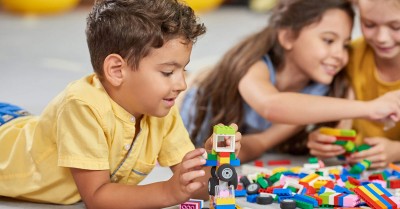
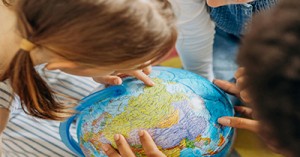
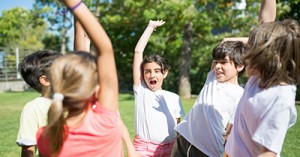
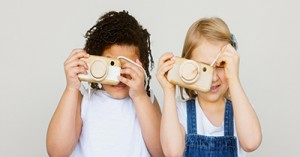
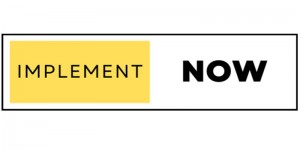
 Here is the list of the EYLF Learning Outcomes that you can use as a guide or reference for your documentation and planning. The EYLF
Here is the list of the EYLF Learning Outcomes that you can use as a guide or reference for your documentation and planning. The EYLF The EYLF is a guide which consists of Principles, Practices and 5 main Learning Outcomes along with each of their sub outcomes, based on identity,
The EYLF is a guide which consists of Principles, Practices and 5 main Learning Outcomes along with each of their sub outcomes, based on identity, This is a guide on How to Write a Learning Story. It provides information on What Is A Learning Story, Writing A Learning Story, Sample
This is a guide on How to Write a Learning Story. It provides information on What Is A Learning Story, Writing A Learning Story, Sample One of the most important types of documentation methods that educators needs to be familiar with are “observations”. Observations are crucial for all early childhood
One of the most important types of documentation methods that educators needs to be familiar with are “observations”. Observations are crucial for all early childhood To support children achieve learning outcomes from the EYLF Framework, the following list gives educators examples of how to promote children's learning in each individual
To support children achieve learning outcomes from the EYLF Framework, the following list gives educators examples of how to promote children's learning in each individual Reflective practice is learning from everyday situations and issues and concerns that arise which form part of our daily routine while working in an early
Reflective practice is learning from everyday situations and issues and concerns that arise which form part of our daily routine while working in an early Within Australia, Programming and Planning is reflected and supported by the Early Years Learning Framework. Educators within early childhood settings, use the EYLF to guide
Within Australia, Programming and Planning is reflected and supported by the Early Years Learning Framework. Educators within early childhood settings, use the EYLF to guide When observing children, it's important that we use a range of different observation methods from running records, learning stories to photographs and work samples. Using
When observing children, it's important that we use a range of different observation methods from running records, learning stories to photographs and work samples. Using This is a guide for educators on what to observe under each sub learning outcome from the EYLF Framework, when a child is engaged in
This is a guide for educators on what to observe under each sub learning outcome from the EYLF Framework, when a child is engaged in The Early Years Learning Framework describes the curriculum as “all the interactions, experiences, activities, routines and events, planned and unplanned, that occur in an environment
The Early Years Learning Framework describes the curriculum as “all the interactions, experiences, activities, routines and events, planned and unplanned, that occur in an environment